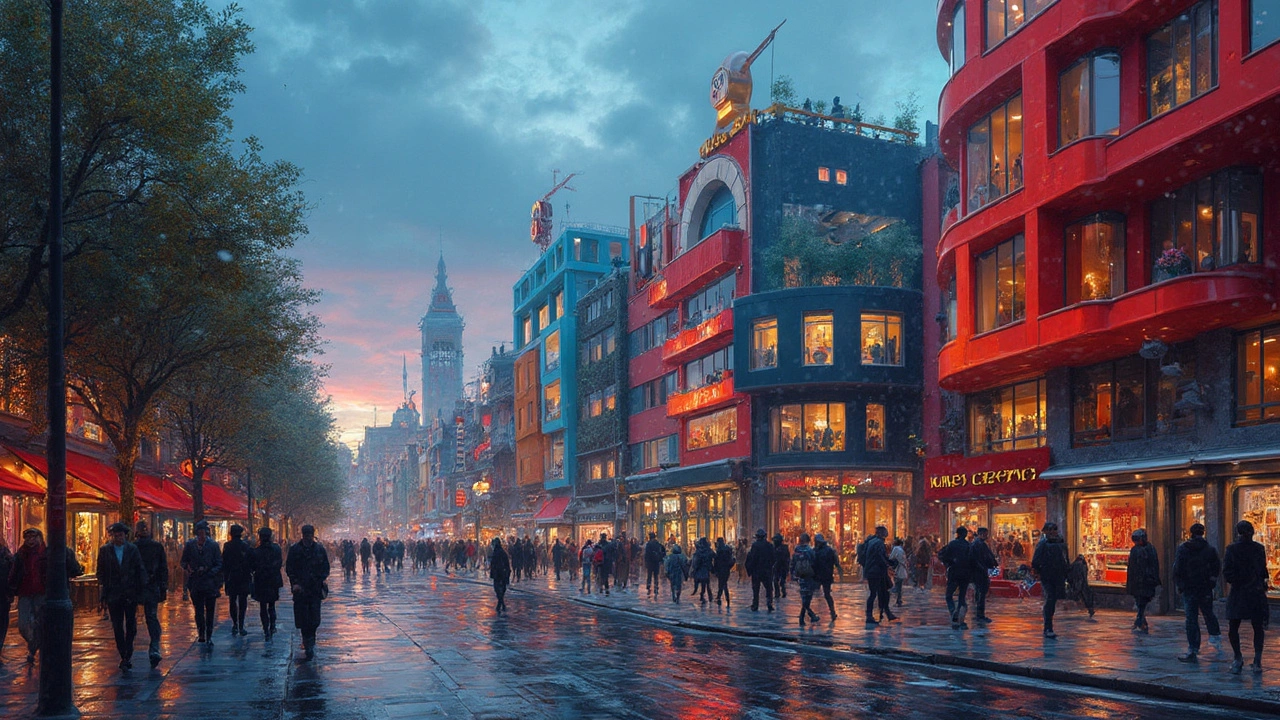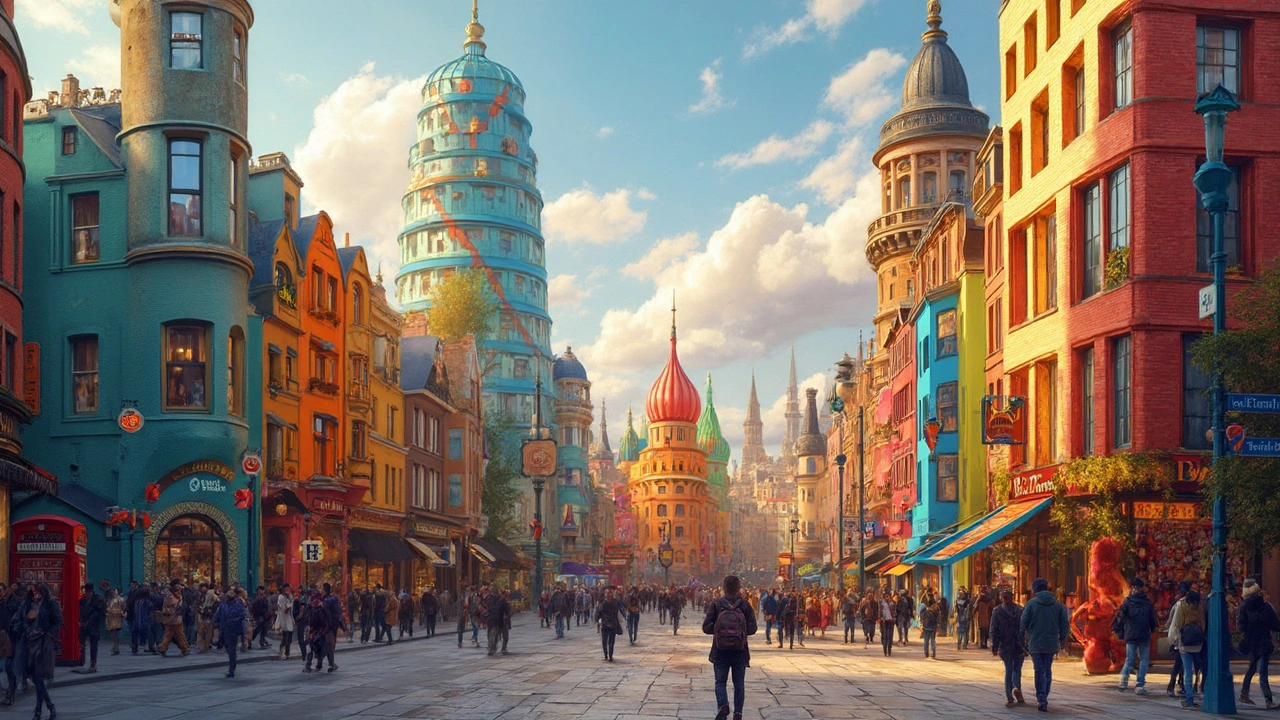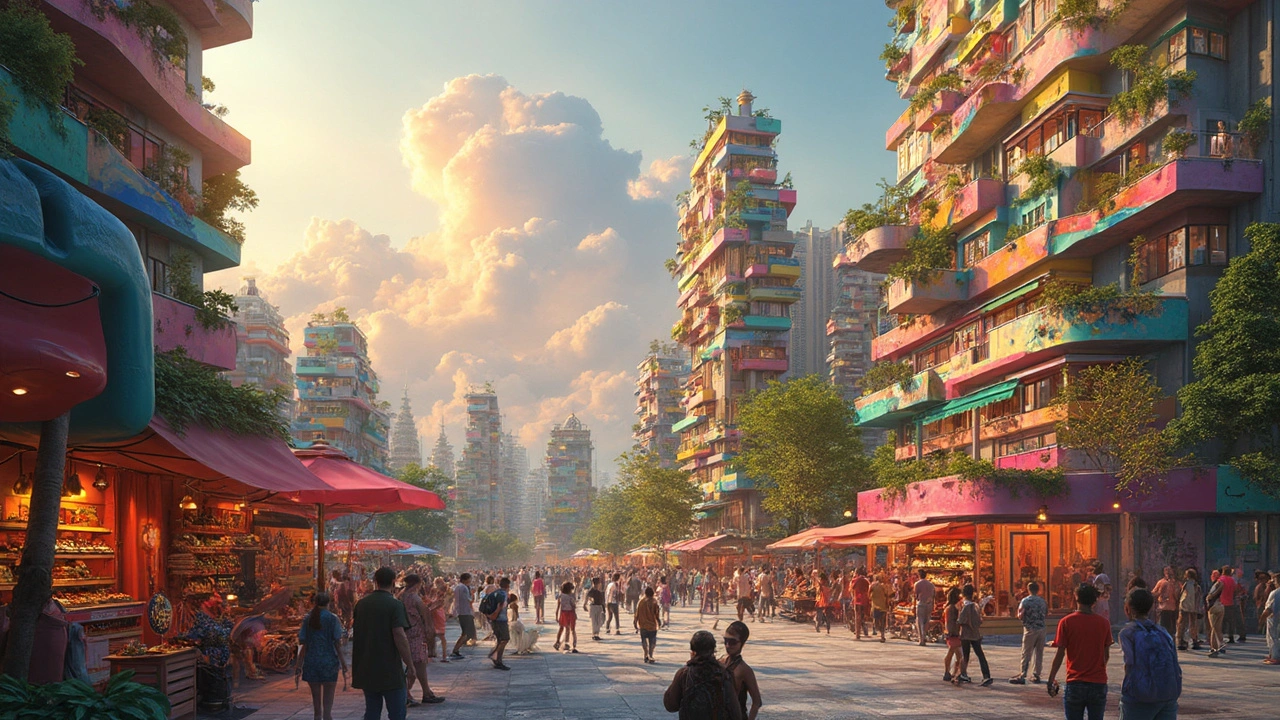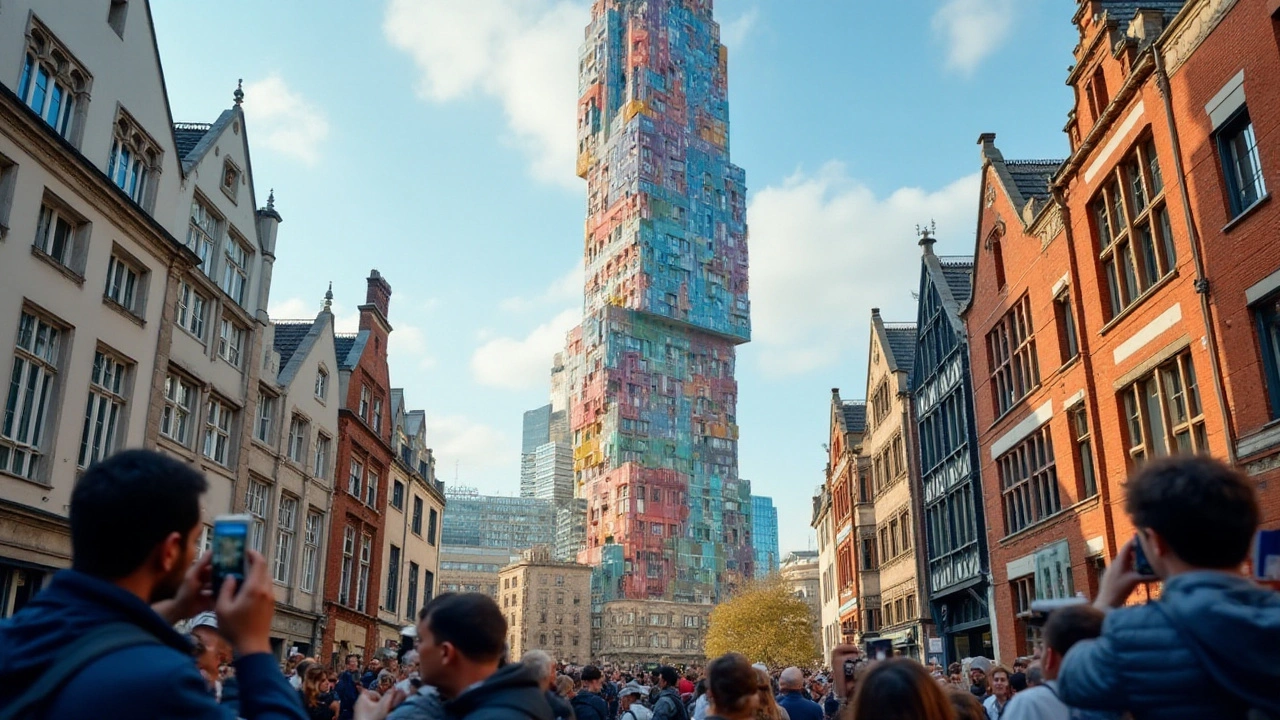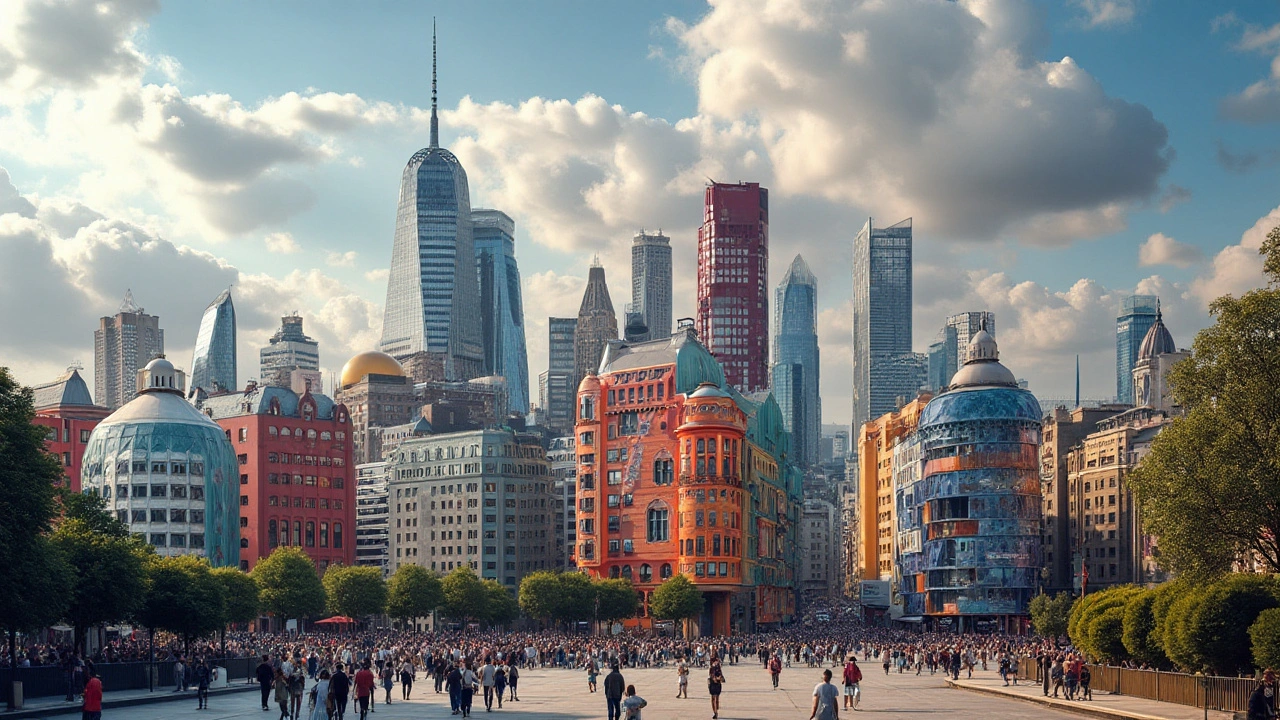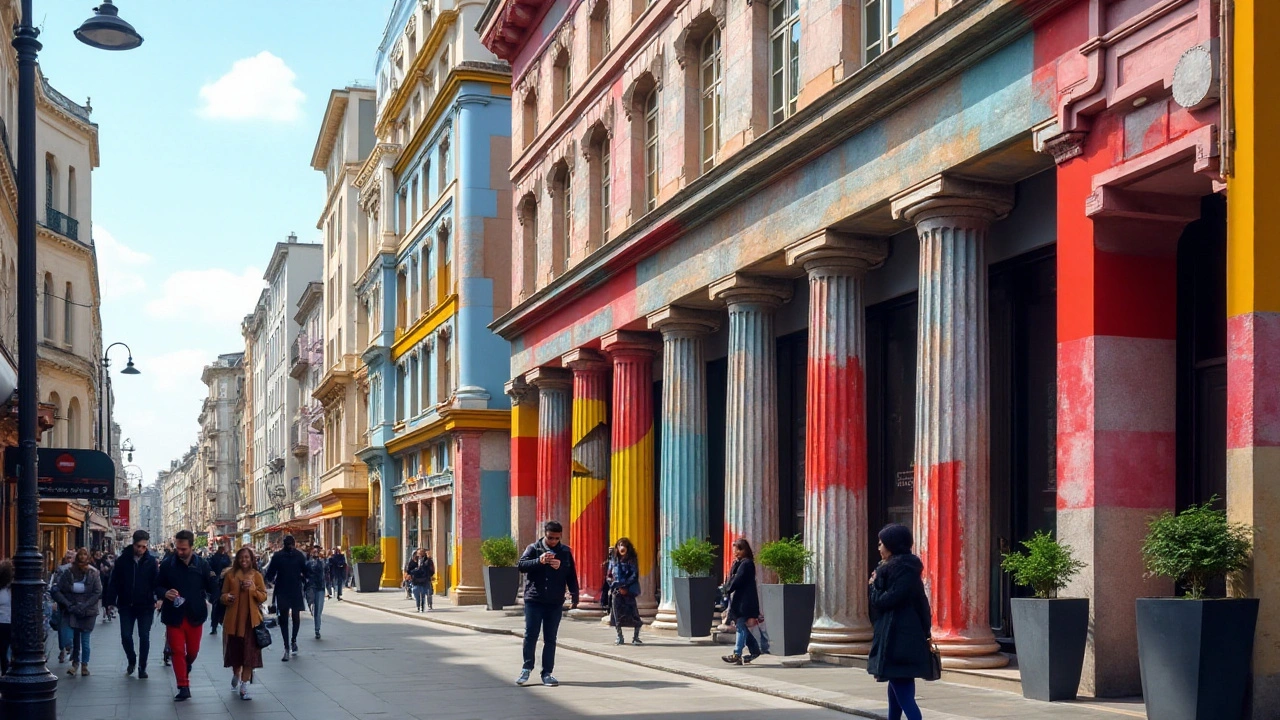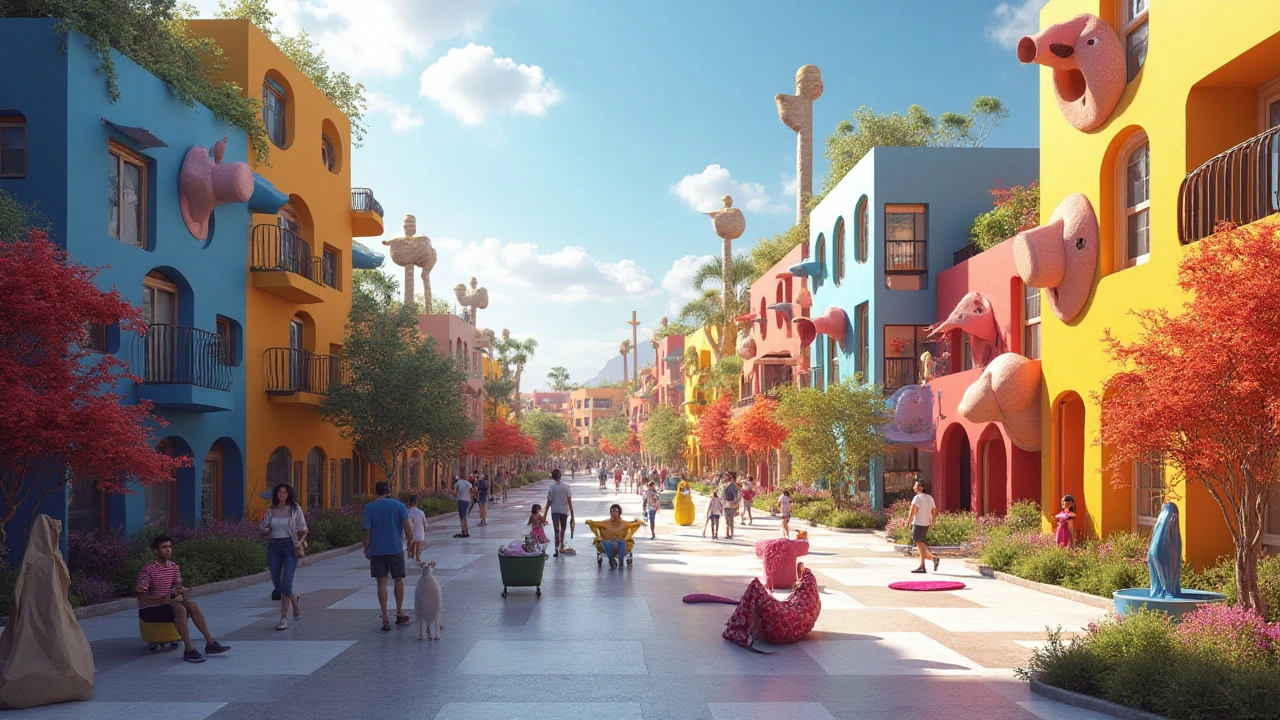Break down what makes postmodern architecture tick, from bold designs and playful details to real-world icons and what this all means for how we live and see our cities today.
Postmodern Architecture: How to Spot Its Bold, Playful Style
Postmodern architecture started as a loud reaction to the clean, serious rules of modernism. Instead of hiding history, postmodern buildings wink at it. They mix columns with neon signs, classical details with odd angles, and often seem to be making a joke or a statement. If you think a building looks theatrical or ironic, it might be postmodern.
What to look for
First, notice ornament and reference. Where modernism stripped buildings down, postmodernism adds back collars, pediments, or other historical bits—sometimes exaggerated or out of place. Next, watch for color and material contrast. Bright colors, painted facades, or unexpected cladding can signal postmodern intent. Shapes are another clue: playful silhouettes, broken rooflines, or a mix of boxes and curves are common.
Pastiche and irony matter. Postmodernism borrows from past styles but often with a twist—think a classical column that’s clearly decorative rather than structural. Context and scale get treated differently too: a building might mimic nearby historic forms but in a larger, cartoonish way. Finally, look for visible signs of meaning—names, signs, or symbolic elements that point to story or humor rather than pure function.
Want examples? The Vanna Venturi House (Philadelphia) flips expectations with a front that reads like a cartoon house. Michael Graves’ Portland Building uses colorful, oversized ornament to challenge civic architecture norms. Philip Johnson’s AT&T Building (now 550 Madison) reintroduced a broken pediment crown—an unmistakable nod to the past placed on a modern skyscraper.
Why it still matters and how to read it
Postmodern ideas did more than create odd buildings; they changed how designers think about meaning and memory. Today you’ll see postmodern moves in retail facades, renovated theaters, and interiors that mix styles on purpose. The style is useful for projects that need personality, storytelling, or immediate visual identity—think boutique hotels, museums, or civic landmarks.
Practical tips to spot postmodern work: look for deliberate historical references used playfully; scan for bright color or clashing materials; check rooflines for unexpected shapes; notice ornament that serves a visual joke rather than structure; and watch signs or typography that become part of the design. If a building makes you smile or asks you to question its seriousness, that’s a postmodern signal.
Want to explore more? Start by spotting these features when you walk your city. Flip through the tag posts linked here to see case studies, famous examples, and quick how-to-spot guides that turn everyday walks into mini architecture lessons. Enjoy looking differently at buildings—you’ll notice a lot more than you think.
Postmodern architecture threw out the rulebook, swapping straight lines and strict forms for playful shapes and unexpected details. This article explores what makes postmodern design so different, highlights famous buildings, and shows how these bold ideas changed cities around the world. You'll get practical tips for recognizing postmodern features and find out how this style still influences today's buildings. Whether you're a design lover or just curious, this guide breaks down the postmodern movement in plain English. Get ready for a tour that might change how you see your city.
Exploring the impact of postmodern architecture on urban landscapes, this article delves into the vibrant and eclectic styles that are redefining our cities. By blending elements from various architectural approaches, postmodernism challenges traditional aesthetics and encourages innovation. Urban environments are transformed into dynamic spaces, fostering creativity and community engagement. With a splash of humor and unexpected designs, postmodern architecture invites us to rethink how we live and interact with our surroundings.
Postmodern architecture stands as a testament to creativity and nonconformity in design. Its origins trace back to the late 20th century as a response to the rigid norms of modernism. Embracing eclectic styles, bright colors, and historical references, postmodernism breathed new life into urban landscapes. This article delves into its defining features, cultural impact, and celebrated structures across the globe. Discover how postmodern architecture continues to challenge convention and inspire new generations of architects.
Postmodern architecture has significantly shaped urban design, offering a blend of styles, forms, and historical references that defy the norms of traditional architecture. This movement, emerging in the latter half of the 20th century, challenges the rigidity and uniformity of modernism by embracing complexity and contradiction. As cities evolve, postmodern buildings bring diversity and creativity, transforming skylines with character and cultural resonance. This article delves into why postmodern architecture is crucial for future urban landscapes, exploring its impact on design philosophy and community identity.
Postmodern architecture, which emerged in the mid-20th century, is known for its diverse styles and challenging of traditional norms. This style incorporates a mix of historical references, bold forms, and playful elements. The movement stands out for its emphasis on embracing complexity and contradiction, often seen in the unexpected juxtapositions seen in the buildings. Through playful colors, shapes, and materials, postmodern architecture creates distinct and memorable spaces.
Explore the fascinating world of postmodern architecture and its profound influence on contemporary urban spaces. This article delves into the unique characteristics of postmodern design, its impact on city planning and community life, and offers interesting facts and valuable tips for appreciating this architectural movement.
Explore how postmodern architecture brings a visual feast to the eyes with its eclectic, innovative designs. Learn about its roots, defining features, and notable examples from around the world. Find out how postmodernism challenges conventions to create spaces that are both functional and artistic. Get tips on incorporating postmodern elements into your own architectural projects.
Say hello to the kaleidoscope of postmodern architecture, a dazzling mirror of our social mores! It's like society took a selfie and, voila, we got these intriguing, unconventional buildings! This edgy architecture style scoffs at the "less is more" mantra, replacing it with a cheeky "more is more". It's a juicy cocktail of styles, mixing historical elements with a playful twist. So, next time you walk by a wacky, mismatched building, remember, it's not just a structure, it's a peek into our vibrant society's soul!

